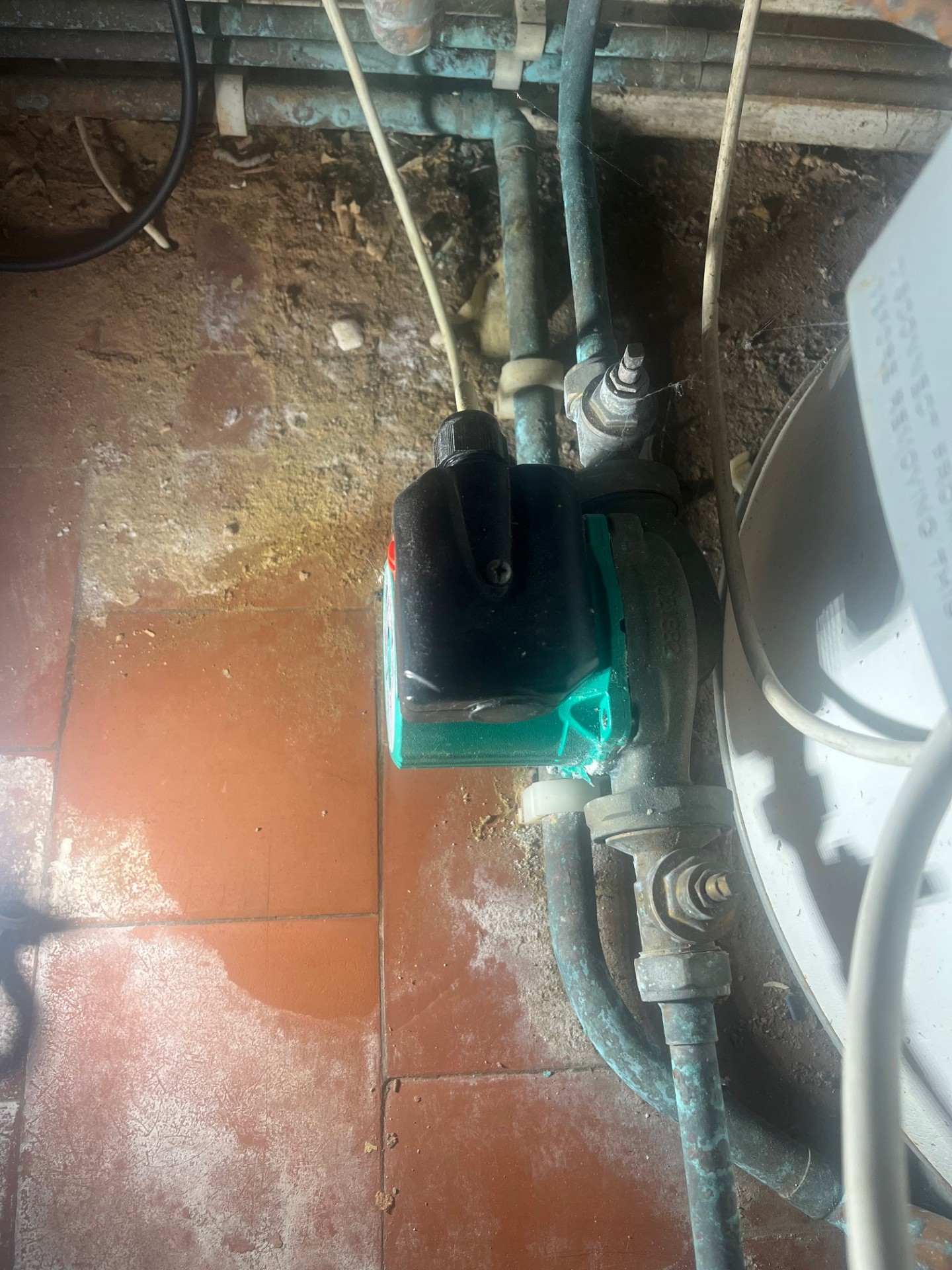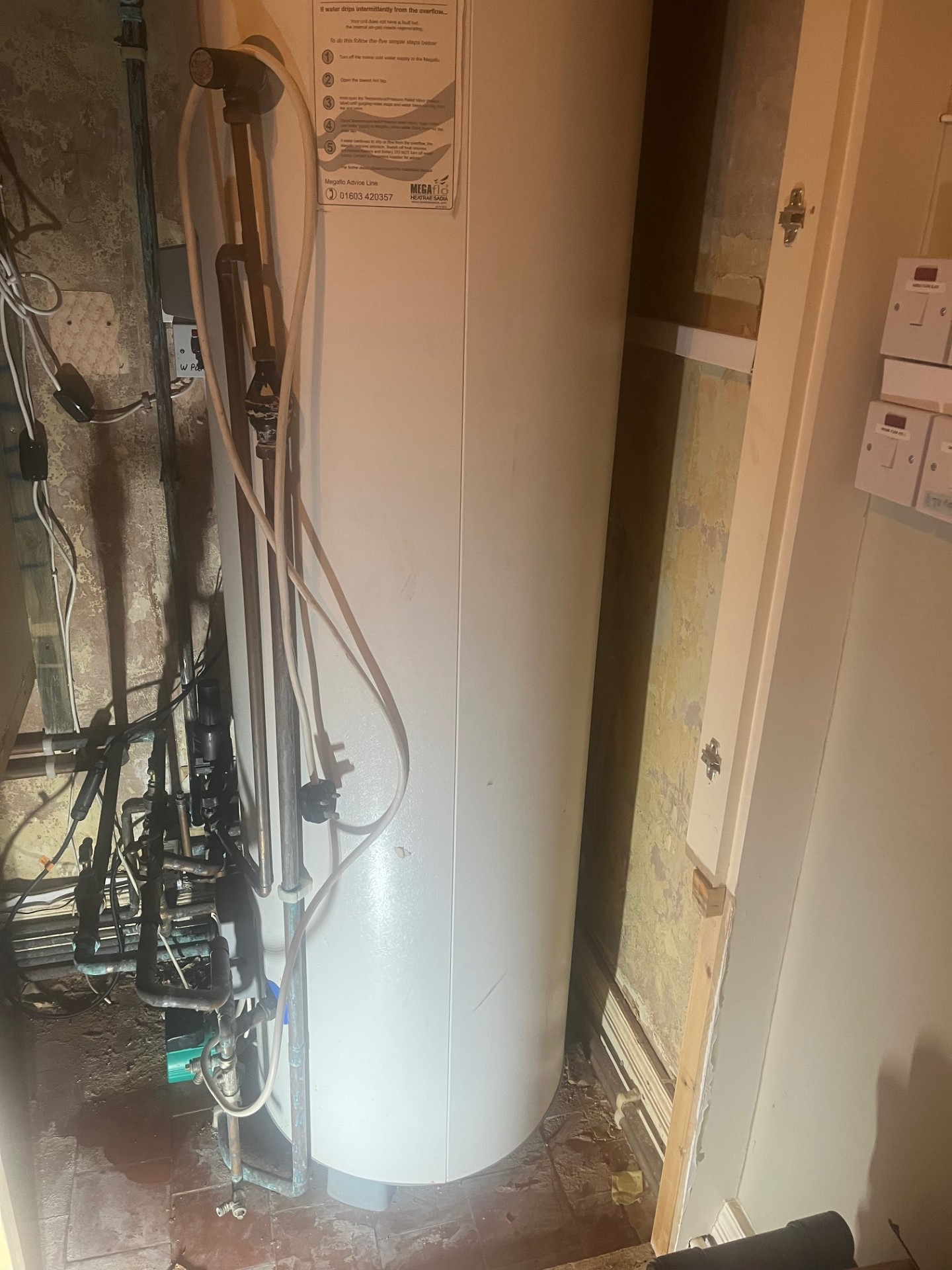We’d like to remind Forumites to please avoid political debate on the Forum.
This is to keep it a safe and useful space for MoneySaving discussions. Threads that are – or become – political in nature may be removed in line with the Forum’s rules. Thank you for your understanding.
📨 Have you signed up to the Forum's new Email Digest yet? Get a selection of trending threads sent straight to your inbox daily, weekly or monthly!
Seized secondary hot water return pump
Comments
-
Are the ones on E-Bay brand new and gauranteed ? i was looking at new price ,when you think about 15 years ago i had a relative who worked at Grunfos and bought a couple for £25 each as i used to have one in the CH system in the house ,got a combi now ,sold one to a friend and i think i still have one in the shed somewhereFreeBear said:diveunderthebonnet said: I would think so ,can you change it yourself ? a replacement is about £200Where are you buying circulation pumps ???Can get a basic one for less than £50 on ebay.OK, Screwfix do a Wilo one for £199.99 - https://www.screwfix.com/p/wilo-4035479-sb30-secondary-circulating-pump-230v/74599 0
0 -
New? Yes - if they say so. Guaranteed? Nope, not unless it's from a proper retailer.diveunderthebonnet said:
Are the ones on E-Bay brand new and gauranteed ? i was looking at new price ,when you think about 15 years ago i had a relative who worked at Grunfos and bought a couple for £25 each as i used to have one in the CH system in the house ,got a combi now ,sold one to a friend and i think i still have one in the shed somewhereFreeBear said:diveunderthebonnet said: I would think so ,can you change it yourself ? a replacement is about £200Where are you buying circulation pumps ???Can get a basic one for less than £50 on ebay.OK, Screwfix do a Wilo one for £199.99 - https://www.screwfix.com/p/wilo-4035479-sb30-secondary-circulating-pump-230v/74599
But, a new pump will almost certainly last waaaay beyond any warranty terms.
I've bought plenty of 'new' stuff from t'Bay, knowing that should it fail a good few months down the line, I'd be stuffed, with no comeback. But, at a good enough price to take the chance.
Of course, if it doesn't work right away, or fails with a month or so, you are protected regardless of the seller.
Lots of 'proper' retailers on there, too, of course.
Oh, and all(?) these new pumps are 'smart', and adjust their flow according to demand. Not only saving energy, but a lot of noise and wear. As long as they work.1 -
Excellent suggestion: larger driver and a lot more force freed it. Unfortunately when I powered it up (and there is power in the cable to the pump) the pump does not work. The unit becomes warm, but not from hot water. Managed to do a video while it was supposedly running and the spindle was not turning.ThisIsWeird said:Could you try again, please? With a proper SD. Tobesuretobesure?1 -
Well done for that first part - what a shame it wasn't enough.TheGreenFrog said:
Excellent suggestion: larger driver and a lot more force freed it. Unfortunately when I powered it up (and there is power in the cable to the pump) the pump does not work. The unit becomes warm, but not from hot water. Managed to do a video while it was supposedly running and the spindle was not turning.ThisIsWeird said:Could you try again, please? With a proper SD. Tobesuretobesure?
Sounds like a failed cap as FreeBear(?) said earlier. Not a major task for experienced DIYers, but usually beyond the remit of most.
Start looking for a replacement pump :-)
1 -
Found the Wilo (wanted as same as existing) one for a bargain £132: https://www.bes.co.uk/wilo-sb-30-bronze-secondary-pump-20710/FreeBear said:diveunderthebonnet said: I would think so ,can you change it yourself ? a replacement is about £200Where are you buying circulation pumps ???Can get a basic one for less than £50 on ebay.OK, Screwfix do a Wilo one for £199.99 - https://www.screwfix.com/p/wilo-4035479-sb30-secondary-circulating-pump-230v/745992 -
I am trying to work out whether to replace the pump myself, in particular what could go wrong. The only real worry is that one or both of the gate valves which isolate the pump fail/have failed (which has been a common occurrence in my plumbing system). If that is the case I am not sure what I would do. The hot water is an unvented system and as the hot water tank (and so the pump) is on the ground floor the pump is located at about the lowest point in the hot water system. If solution is complicated I will get a plumber to do the replacement (two month wait probably!). Thanks for any pointers!0
-
Photos of the pump including valves, and close-ups of each valve, please.
I can't say I fully understand your system. What does this pump actually pump? Is it hot 'system' water from the boiler to the hot cylinder? Or does it circulate the DHW from the cylinder to your taps, like a loop, 'cos you have a humongous house?!
You say it's 'unvented', so depending on where this pump is located, there may be some additional rules. But, a pump replacement is generally a nice DIY job.
First step, as you know, is to confirm whether the two isolating stop valves work. Ie, do the move freely, and do they successfully shut off the supply?
So, do they turn ok?0 -
Many thanks!ThisIsWeird said:Photos of the pump including valves, and close-ups of each valve, please.
A; attached
I can't say I fully understand your system. What does this pump actually pump? Is it hot 'system' water from the boiler to the hot cylinder? Or does it circulate the DHW from the cylinder to your taps, like a loop, 'cos you have a humongous house?!
A; the latter!
You say it's 'unvented', so depending on where this pump is located, there may be some additional rules. But, a pump replacement is generally a nice DIY job.
First step, as you know, is to confirm whether the two isolating stop valves work. Ie, do the move freely, and do they successfully shut off the supply?
So, do they turn ok?
A: One moves freely, the other does not and I don't want to apply too much force until the actual reploacement in case I shear the spindle. I can't tell if they will shut off the supply as the pump doesn't work so no water moves through them. And I have learnt to my cost that even if they turn it does not mean they shut completely.

1 -
Trace the water supply to that pump - it'll almost certainly go to near the top of that cylinder. And then find the mains water inlet to the cylinder - almost certainly that'll also have a stopvalves of some sort.
Ie, if you turn off the feed to the cylinder and open up a tap, it'll soon reduce to a trickle. So, that would be the first step in any job - !!!!!! off mains, open tap, wait for it to stop running.
That will remove any stored pressure, and should also make any trickles from poor stopvalves containable.
It's up to you how far you take this, but swapping a pump when there are valves fitted is usually pretty straightforward. If a valve fails for you - if the spindle shears - then a plumber will most likely have had the same result...
See the valve spindle? The first nut that goes through is your baby. You can undo that with safely after turning off the mains supply and opening a tap. Water won't jet out - the most you'll have is a dribble. You squirt silicone lubricant down there, and tap the spindle a good few times, whilst trying to make it turn. You can get quite firm, but support the valve body. If it snaps - unlikely - just replace the nut, slip a tray under it, and call a plumber.
That's pretty much the only thing that can go wrong - everything else should be plain sailing.1 -
Thanks. Will give a try. Shutting off supply to the tank is easy.ThisIsWeird said:Trace the water supply to that pump - it'll almost certainly go to near the top of that cylinder. And then find the mains water inlet to the cylinder - almost certainly that'll also have a stopvalves of some sort.
Ie, if you turn off the feed to the cylinder and open up a tap, it'll soon reduce to a trickle. So, that would be the first step in any job - !!!!!! off mains, open tap, wait for it to stop running.
That will remove any stored pressure, and should also make any trickles from poor stopvalves containable.
It's up to you how far you take this, but swapping a pump when there are valves fitted is usually pretty straightforward. If a valve fails for you - if the spindle shears - then a plumber will most likely have had the same result...
See the valve spindle? The first nut that goes through is your baby. You can undo that with safely after turning off the mains supply and opening a tap. Water won't jet out - the most you'll have is a dribble. You squirt silicone lubricant down there, and tap the spindle a good few times, whilst trying to make it turn. You can get quite firm, but support the valve body. If it snaps - unlikely - just replace the nut, slip a tray under it, and call a plumber.
That's pretty much the only thing that can go wrong - everything else should be plain sailing.1
Confirm your email address to Create Threads and Reply

Categories
- All Categories
- 352.8K Banking & Borrowing
- 253.8K Reduce Debt & Boost Income
- 454.7K Spending & Discounts
- 245.9K Work, Benefits & Business
- 601.9K Mortgages, Homes & Bills
- 177.7K Life & Family
- 259.8K Travel & Transport
- 1.5M Hobbies & Leisure
- 16K Discuss & Feedback
- 37.7K Read-Only Boards

